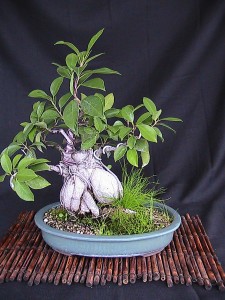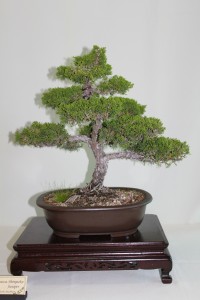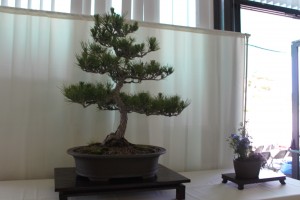A Brief History of Bonsai
A Brief History of Bonsai
The art of cultivating perennial plants in containers dates back at least to Ancient Egypt, and possibly to the Hanging Gardens of Babylon. The Hanging Gardens of Babylon definitely mark the beginning of the deliberate culture of plants for purely ornamental purposes, as well as artificial irrigation systems for purely ornamental gardens. The Ancient Egyptians did cultivate perennial plants in containers for decoration of palaces and temples, but did not shape trees as bonsai in the modern sense.
Bonsai as we understand it probably originated in China during the Sui or Tang Dynasties (AD 589-AD 907). In China, the cultivation of miniature trees in pots was referred to as penzai or pun-tsai. The word Bonsai is a Japanese pronunciation of this word. Bonsai culture unquestionably migrated from China to Japan as a result of trade between the two nations. The earliest mention of tree cultivation in Japan occurred about the year 970, and the earliest visual depiction of bonsai was in a scroll dating from the 12th or 13th Century.
During the Tokugawa Shogunate (1603-1868), collecting a yamadori, or natural dwarf tree from the mountains and containerizing it, became part of the samurai tradition. At first, these collected trees received minimal shaping, other than pruning to maintain their size. Then the Japanese began to shape bonsais with bamboo and twine, using techniques developed for working on garden trees. In the late 1700’s or early 1800’s the Japanese began shaping bonsais with wire. This was the beginning of the modern bonsai tradition. Bonsai became accessable to the Japanese Middle class during the Meiji Restoration after 1868, and by the early part of the Twentieth Century, was the subject of much commercial activity. Numerous kilns began to mass produce bonsai pots, and professional bonsai collectors went into the mountains to collect trees for commercial sale.
While the Japanese had interactions with the Dutch beginning in the early years of the Tokugawa Shogunate, it is doubtful that any bonsais were taken out of Japan before Commodore Matthew Perry’s visit in 1854. Currently the oldest bonsai in the United States (in terms of presence and continuous cultivation as a bonsai) is an oak tree in the Golden State Bonsai Federation’s collection, which was given to President Abraham Lincoln in 1865.
During the Victorian Era, there was a bonsai exhibition at the Paris World’s Fair in 1878. The next major exhibition of bonsai in the Western world for which there is historical provenance was in London, England in 1909. The best known exhibition of that era was at the 1915 Pan Pacific Exposition in San Francisco, California. A number of bonsais were given to the Unites States for the exposition. Some of them survive to this day. The most famous is a Japanese Black Pine which is currently in the care of Boon Manakitivipart.
In the early part of the Twentieth Century, bonsai was practiced extensively in California by Japanese immigrants and Japanese Americans. However, bonsai did not spread outside the Japanese American community until after World War II, when returning GI’s who had been stationed in Japan brought trees with them, and an interest in bonsai.
In 1925, the Brooklyn Botanic Garden received a donation of 36 bonsai trees. However, they were not displayed or well cared for and by 1948, only 11 trees survived. In 1937 Harvard University received a donation of a bonsai collection from the widow of Larz Andersen, a former U.S. Ambassador to Japan, who had purchased the trees in Japan in 1913. This collection’s history is similar to that of the Brooklyn collection. Although the collection was displayed, it was not well cared for until 1962, when the University brought in caretakers who had the proper knowledge and expertise. Prior to that the trees had been forced out of dormancy early for display in flower shows, and this practice resulted in the deaths of several trees.
In 1948, in response to queries from the returning GI’s, the Brooklyn Botanic Garden hired a Japanese gardener, and began to prepare a pamphlet on bonsai care. This pamphlet developed into a book, which was published in 1953, and is widely regarded as the first major publication in America on bonsai care.
By the 1970’s several bonsai books had reached mass publication, and thanks to their distribution, bonsai began to take root in countries around the world. In the forty years since then, many more books have been written, most of them large, “coffee table” books with beautiful illustrations.



